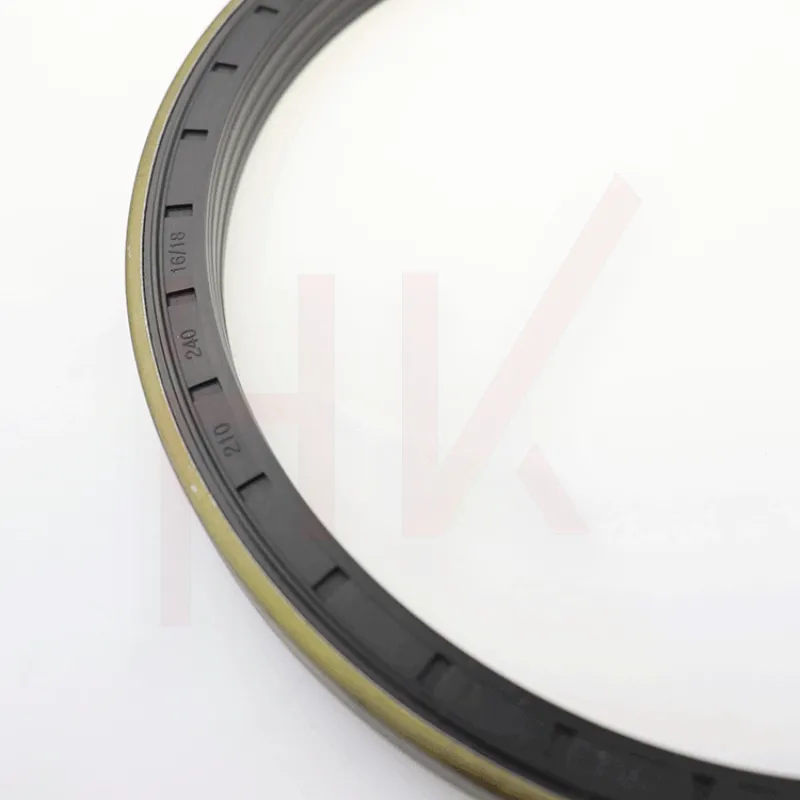Nov . 10, 2024 05:10 Back to list
High-Performance Seals for Extreme Temperature Applications and Their Benefits
High Temperature Shaft Seals Ensuring Performance in Extreme Conditions
In many industrial applications, machinery operates under high temperature conditions, making the integrity of shaft seals critically important. High temperature shaft seals play a crucial role in preventing leakage of lubricants and contaminants, thereby ensuring the smooth operation and longevity of equipment. This article explores the materials, design considerations, applications, and challenges associated with high temperature shaft seals.
Understanding High Temperature Shaft Seals
Shaft seals are components used to seal the interface between rotating shafts and stationary housings. They serve to contain lubricants within the bearing or gearbox, while preventing the ingress of dirt, dust, and moisture from the external environment. High temperature shaft seals are specifically designed to operate under elevated temperature conditions, which can typically range from 200°C (392°F) to over 300°C (572°F), depending on the material and application.
Materials Used in High Temperature Shaft Seals
The selection of materials for high temperature shaft seals is critical due to their exposure to extreme conditions. Common materials include
1. Fluoroelastomers (FKM) Known for their excellent thermal stability and chemical resistance, fluoroelastomers are often used in high temperature applications. They can withstand a wide range of aggressive chemicals, making them suitable for use in oilfield, automotive, and processing industries.
2. Polyimides These polymers offer exceptional temperature resistance and mechanical properties. Polyimide-based seals are ideal for aerospace and automotive applications where reliability under heat is paramount.
3. Ceramic Materials In some cases, ceramics are used for high temperature seals due to their outstanding thermal resistance and durability. They are less common but are used in specialized applications like high-performance engines.
4. Graphite Graphite seals, often combined with other materials, can handle extreme temperatures and provide excellent lubricating properties, making them suitable for high friction applications.
Design Considerations
Designing high temperature shaft seals requires careful consideration of several factors
- Compression Set Resistance The ability of the seal to maintain its shape and sealing capability after prolonged exposure to heat is essential. Materials with low compression set characteristics are preferred.
high temperature shaft seals

- Dynamic and Static Applications The seal design must be appropriate for either dynamic (moving) or static (non-moving) applications. Dynamic seals often require additional features to accommodate wear and facilitate movement.
- Surface Finish The surface finish of the shaft and housing can affect the seal's effectiveness. A smooth finish is generally recommended to reduce wear and provide a better sealing surface.
- Seal Lip Design The geometry of the seal lip can greatly influence its performance. Multi-lip designs or labyrinth configurations may be utilized to enhance sealing efficiency.
Applications
High temperature shaft seals are utilized in various industries, including
- Oil and Gas Equipment operating in extraction processes often faces high temperatures and pressures, making reliable sealing solutions critical.
- Automotive Engines and transmission systems require seals that can withstand high thermal environments and variable operating conditions.
- Aerospace High performance aircraft components rely on seals that can endure extreme heat while maintaining structural integrity and performance.
- Chemical Processing Equipment in chemical plants often operates under high temperatures and must be protected from corrosive environments.
Challenges
Despite advancements, high temperature shaft seals still face challenges. High operating temperatures can lead to material degradation over time, resulting in seal failure. Additionally, thermal cycling can induce mechanical stresses that may compromise the seal’s integrity. Engineers and designers must continuously innovate to improve the performance and lifespan of these critical components.
Conclusion
High temperature shaft seals are vital components that enable machinery to operate efficiently under extreme conditions. By understanding the materials, design considerations, applications, and challenges associated with these seals, industries can ensure the reliability and longevity of their equipment. As technology and materials science continue to evolve, we can expect even more advanced sealing solutions to meet the growing demands of high temperature applications.
-
TCN Oil Seal Metal Ring Reinforcement for Heavy Machinery
NewsJul.25,2025
-
Rotary Lip Seal Spring-Loaded Design for High-Speed Applications
NewsJul.25,2025
-
Hydraulic Cylinder Seals Polyurethane Material for High-Impact Jobs
NewsJul.25,2025
-
High Pressure Oil Seal Polyurethane Coating Wear Resistance
NewsJul.25,2025
-
Dust Proof Seal Double Lip Design for Construction Equipment
NewsJul.25,2025
-
Hub Seal Polyurethane Wear Resistance in Agricultural Vehicles
NewsJul.25,2025
-
The Trans-formative Journey of Wheel Hub Oil Seals
NewsJun.06,2025
Products categories
















